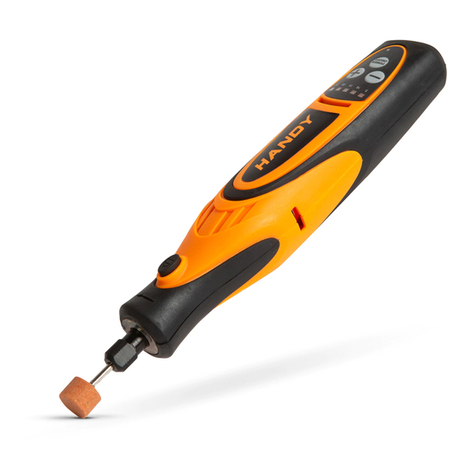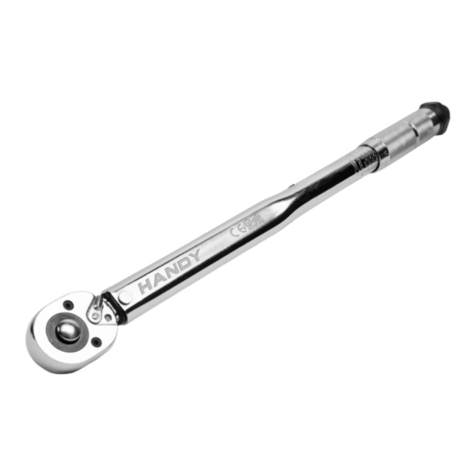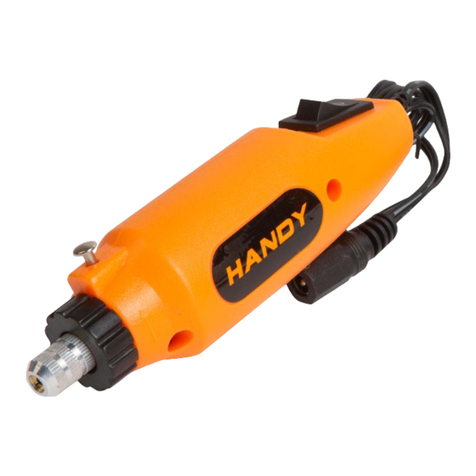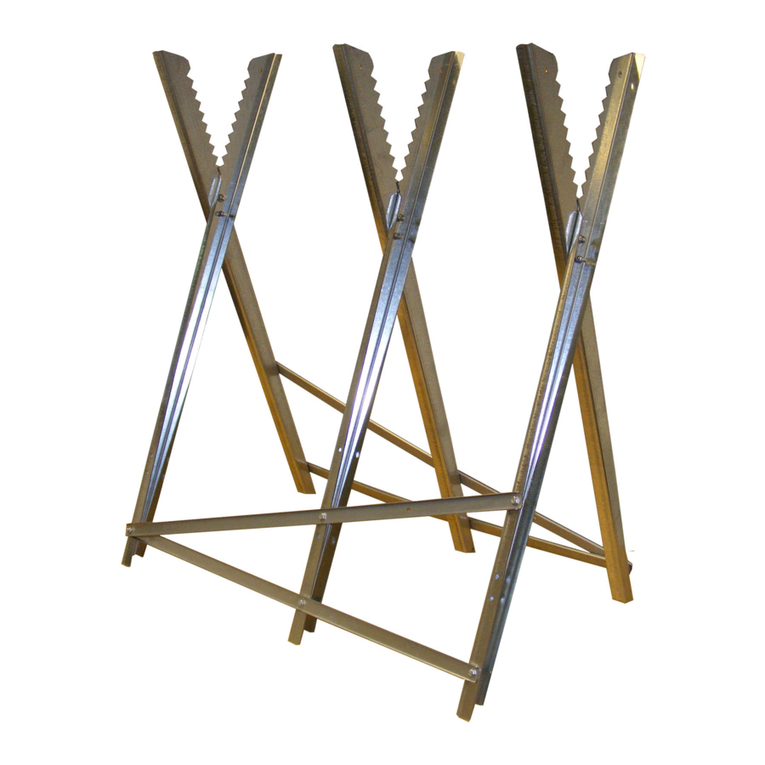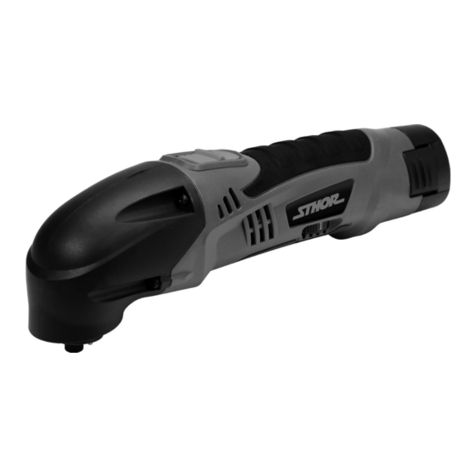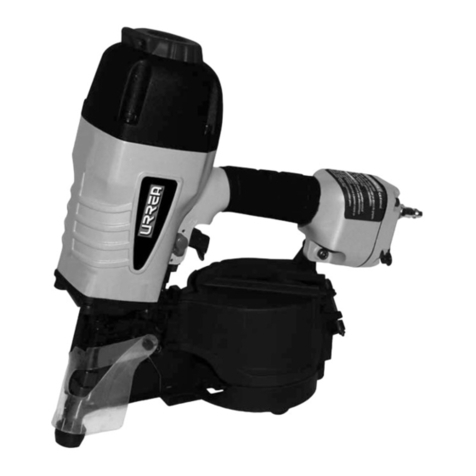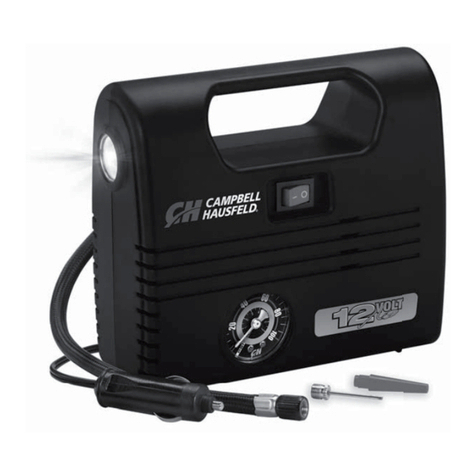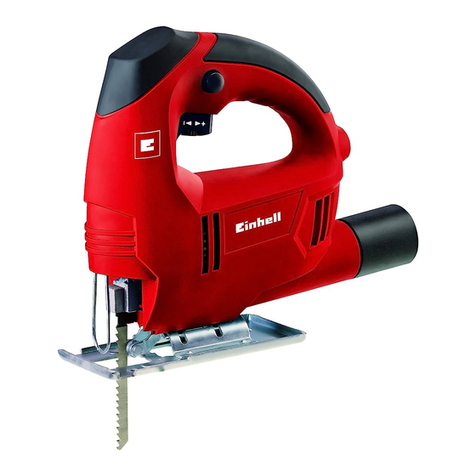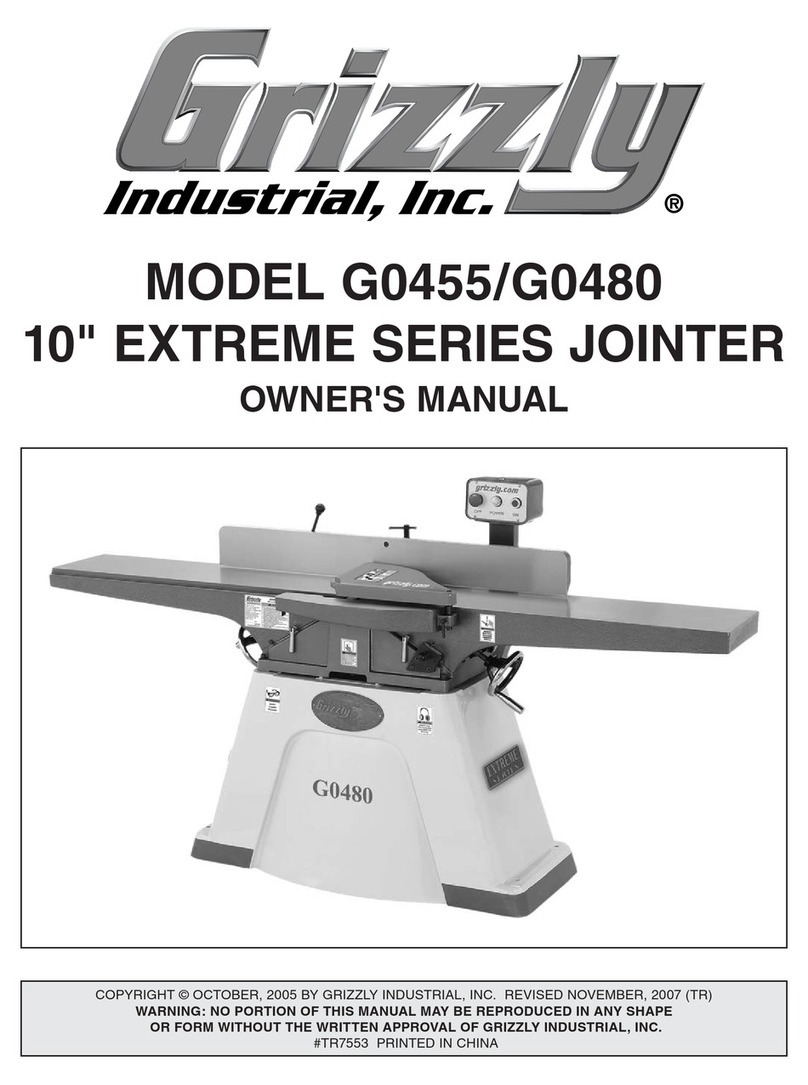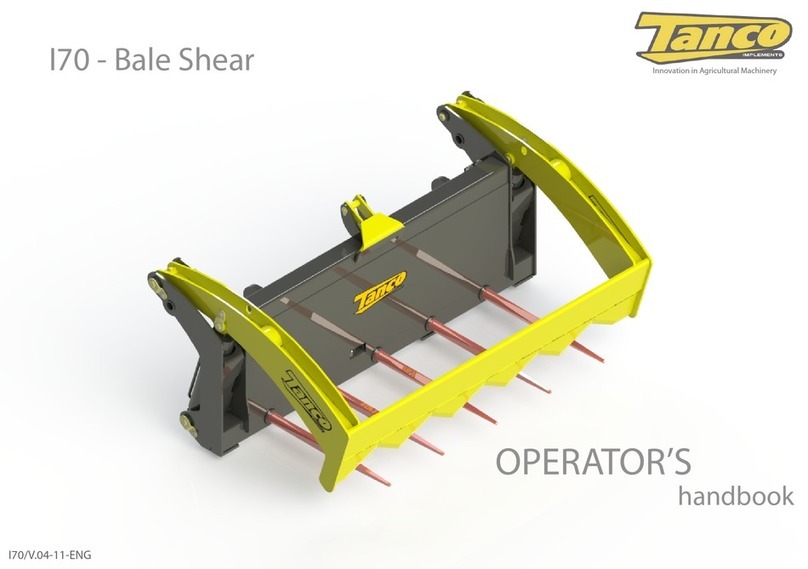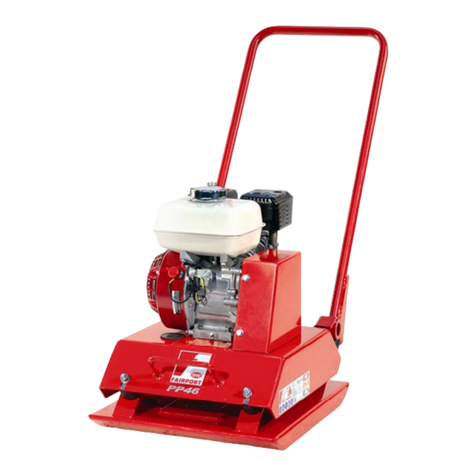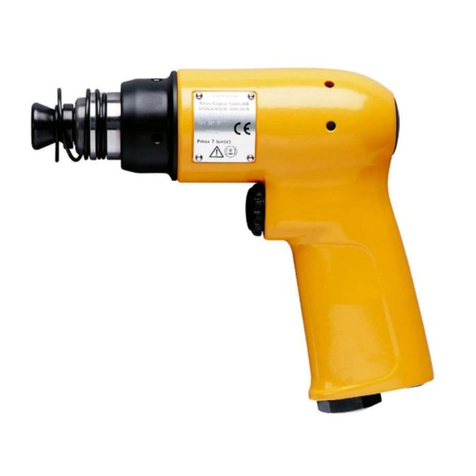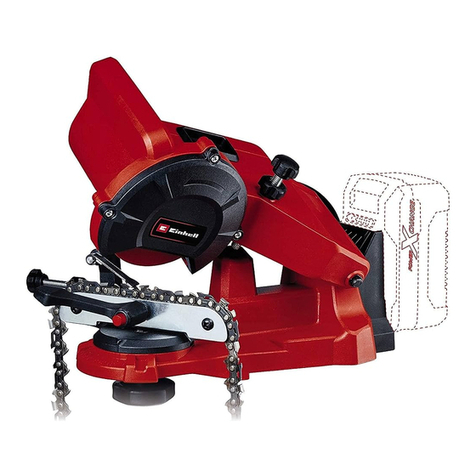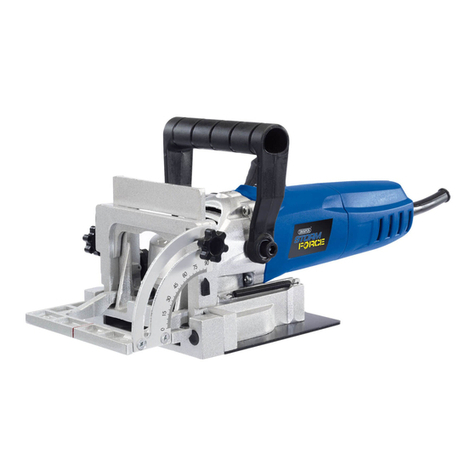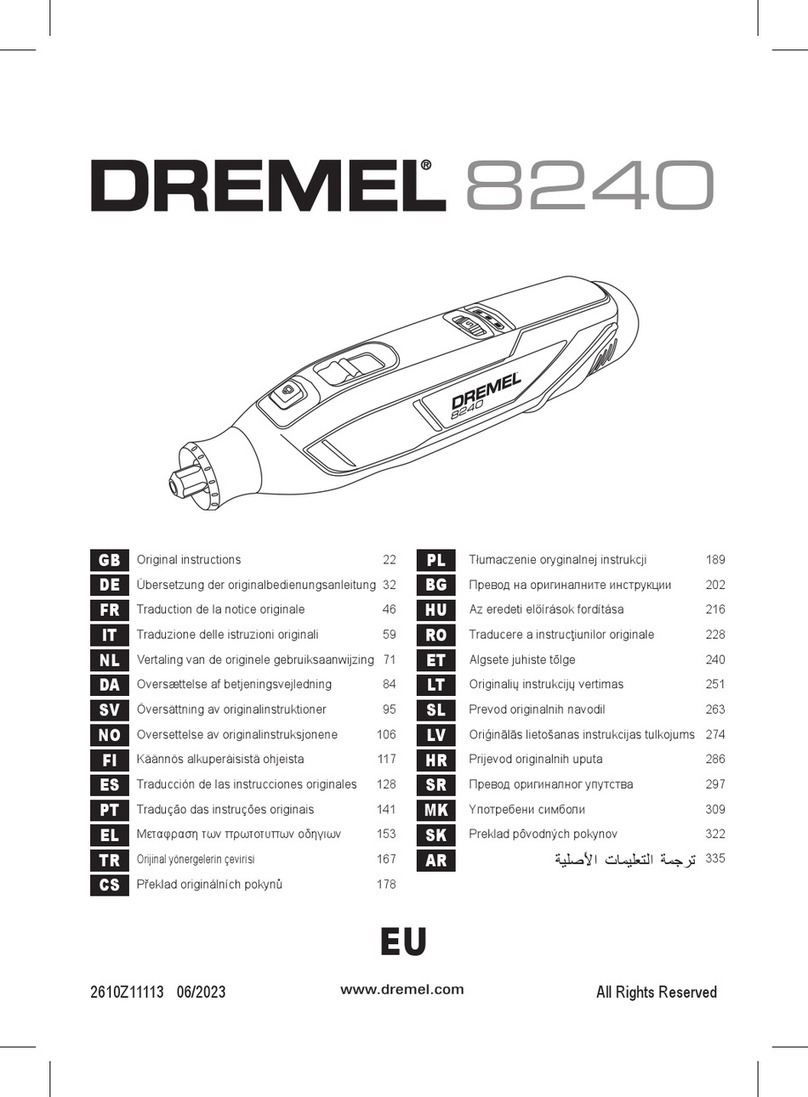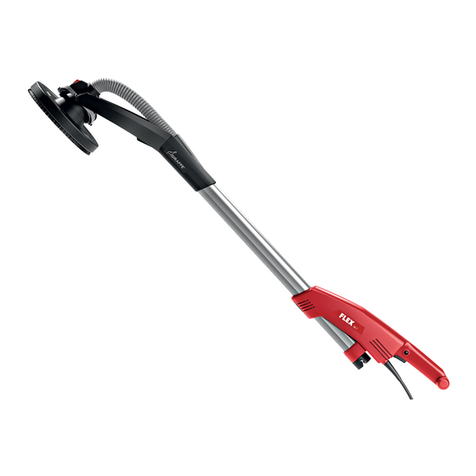The Handy THMT26 User manual

24/11/2017
26cc PETROL
4 in 1 MULTI-TOOL
Model No: THMT26 -- Product No: 1938176001
ASSEMBLY REQUIRED
SAVE THESE INSTRUCTIONS
SPARES & SUPPORT: 01793 333212
Please read & understand this manual, payingattention to the safety instructions, before use.
The manufacturer reserves the right to change the product specification and livery according to
continued product improvements.
Images used are for illustration purposes only
INSTRUCTION MANUAL


CONTENTS
SPECIFICATION
IMPORTANT INFORMATION
GENERAL SAFETY INSTRUCTIONS
GET TO KNOW YOUR MACHINE
ASSEMBLY
FUELING
OPERATION
MAINTENANCE
STORAGE
TROUBLE SHOOTING
PARTS DIAGRAM & LIST
EC DECLARATION OF CONFORMITY
WARRANTY
NOTES
ASSEMBLY IS REQUIRED
This product requires assembly before use. See the “Assembly” section for instructions. Please check
that all parts required for the assembly of this machine are included. If for any reason you believe a part
for the assembly is missing or damaged, please contact us.
If you require any assistance with regards to the contents or operation of
your machine, please contact us:
TEL: 01793 333212
EMAIL: customerservice@handydistribution.co.uk
(MON –FRI 8.00AM TO 5.30PM EXCL. BANK HOLIDAYS)
You can register your machine at www.thehandy.co.uk

SPECIFICATION
The manufacturer reserves the right to change the product specification and livery according to continued
product improvements.
Model
THMT26
Product Number
1938176001
Engine
2-stroke, Air-cooled
Bore & Stroke
32 & 28mm
Number of cylinder
1
Engine Displacement
25.4cm3
Rated speed
7500rpm
Maximum torque speed
6500rpm
Maximum engine speed
10500rpm
Fuel Type
Unleaded Petrol
Fuel Mixture
Unleaded Petrol/2-Stroke Synthetic Oil
40:1
Fuel Tank Capacity
550ml
Brushcutter
Line Trimmer
Pruner
Hedgecutter
Cutting Diameter
254mm
400mm
19mm
Cutting Length
254mm
450mm
Chain Bar Type
3/8”
Shaft
Straight
Curve
Straight
Straight
Blades
3T
(Double Sided)
2
(Double Edged)
Spool Type
Bump Feed,
Twin Line
Line Diameter
2.4mm
Chain Pitch
3/8” 0.050
Chain Links
44
File Required
5/32”
Net Weight with Power Unit
(5.1kg Empty Tank)
7.0kg
6.05kg
7.1kg
7.3kg
Length with Power Unit
(103mm)
185mm
170mm
212mm
228mm
Declared Sound Power Level
112 dB(A)
Vibration
Front Handle: Idling 6.303 m/s2, Racing 5.323 m/s2
Rear Handle: Idling 6.128 m/s2, Racing 5.362 m/s2
Uncertainty: K=1.5 m/s2
Max Cutting Speed
6800 rpm
7000 rpm
6500 rpm
1500 rpm

IMPORTANT INFORMATION
INTENDED USE
The Multi-Tool is designed solely for domestic gardens, with annual use below 50 hours. This product is not
intended for commercial use. Generally acknowledged accident prevention regulations and enclosed safety
instructions must be observed. Only perform work described in these instructions for use, any other use is
incorrect. The manufacturer will not assume responsibility for damage or injury resulting from such use.
GENERAL SAFETY INSTRUCTIONS
Read and understand the owner’s manual and labels affixed to the product. Learn its application and
limitations as well as the specific potential hazards. Retain these instructions for future reference. The
operator is responsible for following the warnings & instructions in this manual and on the product.
STAY ALERT
Do not operate the machine while under the influence of drugs, alcohol, or any medication that could affect
your ability to use it properly. Do not use this machine when you are tired or distracted from the job at hand.
Be aware of what you are doing at all times. Use common sense.
WORKING PLAN
Plan your work schedule and allow plenty of time for rest. Use continuously for around 30-40 minutes per
session and take between 10-20 minutes rest between work sessions. Also try to keep total amount of work
performed in a single day under 2 hours or less.
AVOID DANGEROUS CONDITIONS
Make sure there is adequate surrounding workspace. Cluttered areas invite injuries. Keep your work area clean
with sufficient light. Keep the area around the machine clear of obstructions, grease, oil, rubbish and other
debris which could cause persons to fall onto moving parts.
SAFE TRANSPORTATION
Always carry the machine and attachments with the supplied safety guards. If transporting by vehicle, ensure
is it secured horizontally, with the fuel tank at the lowest point, to prevent turnover, fuel spillage or damage.
INSPECT YOUR MACHINE
Check all bolts, nuts, and screws for tightness before each use, especially those securing guards and drive
mechanisms. Vibration during use, may cause these to loosen. Always check to see that all other tools or
equipment are removed from the working area before turning it on. Replace damaged, missing or failed parts
before using it. Warning labels carry important information. Replace any missing/damaged warning labels.
DRESS PROPERLY
Do not wear loose clothing, gloves, scarfs, neckties or jewellery (rings, wrist watches), which can be caught in
moving parts. Protective gloves and non-skid heavy-duty footwear are highly recommended when working.
Wear a face or dust mask if the operation is dusty. Always wear safety glasses/goggles and/or face shields.
Everyday eyeglasses have only impact resistant lenses; they are not safety glasses/goggles. Wear protective
hair covering to contain long hair, preventing it from getting caught in machinery.
CAUTION HOT
Do not touch hot parts of the machine, burn injuries may occur.
DO NOT SMOKE
Do not smoke when using the machine & caution when handling fuel. We recommend you fuel the machine at
least 3 metres away from where you wish to work, in case any spilt fuel ignites when starting the engine.
AVOID ELECTRICAL SHOCK
Do not operate near underground electrical cables, telephone lines, pipes or hoses.
USE THE SHOULDER HARNESS
Always use a shoulder harness. Adjust the shoulder harness to a comfortable operating position before
starting. Maintain a firm grip on both handles. Keep your area clear of the machine cutting area.
DO NOT OVERREACH
Keep proper footing and balance at all times when using the machine. Serious injury could occur if the moving
parts are unintentionally contacted. Do not store anything above or near the machine, where anyone might
stand on the machine to reach them.
AVOID INJURY FROM UNEXPECTED ACCIDENT
Keep hands & feet out of the way of all moving parts. Do not place any part of your body or any tool e.g. in the
machine during operation. Do not place any moving parts on the ground during start up.

BLOCKAGES
Do not attempt to remove a blockage from a jammed machine before first switching the engine off.
KICKBACK
The Pruner attachment is supplied with a low KICKBACK chain, however sometimes kick back can occur, so
always hold the unit firmly in two hands. The Kickback danger zone on your Pruner is the upper part of the
nose of the guide bar. Never saw using this part of the guide bar, which poses a significant risk for kickback.
DO NOT FORCE TOOL
Always work within the rated capacity. Do not use machine for a purpose for which it was not intended.
NEVER LEAVE MACHINE RUNNING UNATTENDED
Do not leave the machine unattended until it has come to a complete stop.
MAINTAIN YOUR MACHINE WITH CARE
Clean the machine immediately after use. Keep clean to ensure it operates to its full and safest performance.
When maintaining, only manufacturer original replacement parts. The use of non-original manufacturer parts
may invalidate your warranty.
PROTECT THE ENVIRONMENT
Take left over materials & fluids to an authorised collection point or follow the stipulations in the country
where the machine is used. Do not discharge into drains, soil or water.
STORE IDLE EQUIPMENT
When not in use, the machine should be stored in a dry location. Keep the machine away from children and
others not qualified to use it.
SAFETY SYMBOLS
Safety alert symbol. Used to alert you to potential
personal injury hazards. Obey all safety messages
that follow this symbol to avoid possible injury.
DANGER
Indicates an imminently hazardous situation
which, if not avoided, will result in serious injury.
WARNING
Indicates a potentially hazardous situation which,
if not avoided, could result in serious injury.
CAUTION
Indicates a potentially hazardous situation which,
if not avoided, may result in minor or moderate
injury.
CAUTION
Used without the safety alert symbol indicates a
potentially hazardous situation which, if not
avoided, may result in property damage.
1 2 3 4 5 6 7
1. Read the owner’s manual prior to operating the machine
2. Wear head, eye and ear protection
3. Wear non-skid heavy duty footwear.
4. Wear protective electrically non-conductive gloves.
5. Beware of thrown objects.
6. Warning/Attention
7. Keep all children, bystanders and animals 15 metres away from Danger Zone.
NEVER MODIFY THE MACHINE.
The warranty supplied with the product is void if you make any modification to the machine or if you do not
observe the proper usage guidance written in this manual.

GET TO KNOW YOUR MACHINE
Image used for illustration purposes and may differ slightly from your item.
FUEL TANK
PRIMER
BULB
BRUSHCUTTER
LINE TRIMMER
GUARD
CHAIN COVER
CHAIN OIL
TANK &
CAP
PETROL
POWER
UNIT
CHAIN
GUARD
FUEL TANK
CAP
CHOKE
LEVER
THROTTLE
TRIGGER
SAFETY
LEVER
ON/OFF
SWITCH
P-HANDLE
HARNESS
HANGER
QUICK
JOINT
AIR FILTER
HOUSING
GUARD
PRUNER
HEDGECUTTER
GUIDE BAR &
CHAIN
3T
BLADE
DOUBLE
BLADE
BLADE
COVERS
SPOOL & NYLON
LINE

ASSEMBLY
LINE TRIMMER ATTACHMENT
GUARD
Place the guard onto the bent shaft of the Line Trimmer Attachment. The bracket is placed on the top of the
shaft and the guard sits underneath. They are secured with two 4mm Allen Key Bolts. Tighten until secure.
(Fig 1)
NYLON HEAD
The Nylon Head is secured to the shaft, by rotating clockwise. Do so until you reach the end of the thread
(Fig 2). Secure the large nut with a suitable Spanner or Mole Grip and hand tighten until secure. (Fig 3)
BRUSHCUTTER ATTACHMENT
GUARD
Place the plastic guard onto the small metal guard & secure with three 5mm Allen Key bolts. (Fig 4).
METAL BLADE
Remove the Blade Nut, Cup & Clamp Washers. The Stepped Washer must remain (Fig 5).
Now place the blade onto the Stepped Washer, ensuring the step of the washer is placed into the hole of the
blade (Fig 6). Sit the Clamp Washer onto the blade (Fig 7).
Fig 1
Fig 2
Fig 3
Fig 4
Fig 6
Fig 7
CUP
WASHER
CLAMP
WASHER
STEPPED
WASHER
BLADE NUT
Fig 5

Sit the Cup Washer onto the Clamp Washer (Fig 8). Thread the Blade Nut onto the shaft. Please note this is a
Left-Hand threaded nut and should be rotated anti-clockwise, to secure (Fig 9).
Align the locking hole within the Metal Guard and Stepped Washer (Fig 10). Insert an Allen Key to stop the
shaft rotating (Fig 11) and firmly tighten the Blade Nut with a Spanner (Fig 12).
PRUNER ATTACHMENT
You will need to attach the Pruner head to the shaft (Fig 13).
Remove the 5mm Allen Key Bolts located in the Head and Clamp of the Pruner
Insert the Shaft into the Head, ensuring the splined driveshaft is housed into the splines of the Head.
Align the Fixing Hole located on the shaft with the hole within the Head and tighten with the 5mm Allen Key
Bolt, until secured.
Insert the second 5mm Allen Key Bolt into the clamp and tighten until secure.
1. Shaft
2. Pruner Head
3. Fixing Hole
4. Clamp
5. 5mm Allen Key Bolt x2
WARNING
The Chain has very sharp edges. Use protective gloves for safety.
WARNING
Ensure the Chain is placed in the correct direction.
Fig 8
Fig 9
Fig 10
Fig 11
Fig 12
Fig 13

Check the Chain has a smooth rotation and correct tension with your hand (Always where safety gloves). If
necessary, adjust. The tensioner arm should be located into the lower hole (1) of the guide bar to allow full
adjustment.
Adjust the chain tension by turning the tensioner screw. You should be able to pull the chain away from the
guide bar, 5-6mm or pull the chain along the guide bar by hand.
1. Chain Tension Adjuster Screw
a. Loosen
b. Tighten
WARNING
It is important to maintain the proper chain tension. Rapid wear of the Chain/Guide Bar or the Chain coming
off easily can be caused by improper tension. A new chain must be tensioned more often than an older
chain, which has been used for some time.
SHOULDER STRAP
WARNING
ALWAYS wear the provided Shoulder Strap, when operating. Make sure the Shoulder Strap is hooked
securely to the Harness Hanger. Incorrect use can cause the machine to be unbalanced and may cause injury
to yourself of bystanders.
Wear the provided Shoulder Strap without twists, with the connecting hook (Fig 17) on your right side. Hook
the Shoulder Strap to your chosen locating holes on the Harness Hanger. Adjust the length of the Shoulder
Strap to enable the cutting blade to be parallel to the ground when you are in your normal working position
(Fig 18). This provides the most effective and comfortable operating position.
QUICK RELEASE
The Shoulder Strap is equipped with a Quick Release devise. To release the machine from the harness in an
emergency situation, please follow the below steps:
WARNING
Always check the correct operation of the Quick Release before operating the machine. Make sure you hold
the machine securely, prior to checking the Quick Release mechanism.
Fig 14

While holding the machine securely with your left hand, pull the red tab (1) and the Shoulder Strap will release
from the machine. (Fig 17)
P-HANDLE
Mount the handle onto the Handle Seat (Fig 18) Insert and tighten the bolts supplied to secure the handle to
the shaft in the desired position. Ensure the leg guard of the Loop Handle is on the left of the shaft and in the
direction as per the arrow on the grip. (Fig 19)
QUICK JOINT
The Quick Joint coupler allows you to safely attach the different attachments to the power unit. To attach your
chosen attachment to the power unit, follow the below steps.
1. Loosen the Handwheel (Fig 22)
2. Align the attachment with the power unit (Fig 20)
3. Insert the attachment and depress the coupler lever. (Fig 21)
4. Ensure the attachment securing hole is aligned with the couple lever leg and secure.
5. Tighten the Handwheel until secure. (Fig 22)
Fig 15
Fig 16
Fig 17
Fig 18
Fig 19
Leg Guard
Fig 20
Fig 21
Fig 22

FUELING
Fuel & its vapors are very flammable. Do not use or fuel the machine near a flame, sparks or while smoking.
Allow the engine to cool for more than 3 minutes, before re-fueling. Never fuel the machine with the engine
running. Fuel the engine at least 3 metres away from your work area. Always fuel your machine outdoors.
FUEL MIXTURE
The machine has been designed to use 40:1 unleaded petrol to 2-stroke synthetic oil fuel ratio.
The fuel mixture should be shaken prior to entering the machine fuel tank.
40:1 Fuel Mixture Ratio
Unleaded Petrol –litre
Two-Stroke Synthetic Oil - ml
1
25
2
50
3
75
4
100
5
125
Use good quality unleaded fuel. Fuel which is older than 30 days old can become stale and cause acid & gum
deposits in the fuel system or essential carburettor components. This could result in starting issues which
would not be covered by your manufacturer’s warranty.
To keep fuel fresh, we recommend you use SURE-START FUEL ADDITIVE (HP-199) from Handy Parts. A fuel
additive added to your fuel at the time of mixture, will help make your machine easier to start, extend the
shelf life of your fuel mixture for up to two years, keeps the carburettor & engine clean, plus reduces emissions
and increases fuel economy. A 250ml bottle of SURE-START FUEL ADDITIVE will treat 25 litres of fuel mix
Only use 2-stroke air cooled engine oil. DO NOT USE automotive or marine oil.
It is recommended that you use a Fuel Mixing Bottle, to ensure the correct fuel mixture is used with your
machine. We recommend HANDY PARTS –FUEL MIXING BOTTLE (HP-120).
Unscrew the fuel cap slowly and fill the fuel tank with your fuel mixture to a maximum of 80% capacity. This
will allow the fuel tank expansion. Fasten the fuel cap tightly, being careful not to cross-thread. This will also
prevent loosening through vibration during use.
Wipe away any spillage, with an appropriate material.
If the machine has continued leaks, the product should not be started. Never use the machine with damaged
ignition cable or spark plug cap, as there is a risk of sparks.
IMPORTANT
Ensure that any stored petrol/oil mixture is clearly marked in a separate appropriate canister for a
maximum of 4-6 weeks if not mixed with a fuel additive. If the machine is not going to be used for a long
period, drain the mixture from the fuel tank, start the engine and drain the carburetor of any remaining fuel.
(See Maintenance for further instruction). Dispose of any unwanted 2-stroke mixture at an authorised
recycling point.
FUELING THE MACHINE
Place the machine onto a solid flat surface.
Ensure the engine is not running, before refueling.
Unscrew the fuel cap slowly and fill the fuel tank with your fuel mixture to a maximum of 80% capacity. This
will allow the fuel tank to expand.
Fasten the fuel cap tightly, being careful not to cross-thread. This will also prevent loosening through vibration
during use. Wipe away any spillage, with an appropriate material.
If the machine has continued leaks, the product should not be started. Never use the machine with damaged
ignition cable or spark plug cap, as there is a risk of sparks.
Operating the engine with insufficient oil within your fuel can have catastrophic consequences. Any failure
caused by insufficient oil, will not be covered by the manufacturer’s warranty, supplied with this machine.

OPERATION
DANGER
The DANGER ZONE on the output of the machine must be respected, to avoid serious injury. Do not allow
anyone to enter the operating DANGER ZONE with you. The danger zone is an area 15 metres in radius.
Insist that persons in the RISK ZONE beyond the danger zone wear eye protection from thrown
objects. Do not operate if the user or bystanders have insufficient protection.
DANGER ZONE WITHIN 15 METRES –RISK ZONE GREATER THAN 15 METRES
POWER UNIT
STARTING A COLD ENGINE
Once you are happy that your Multi-Tool has been assembled & fueled correctly, you are now in a position to
start the machine.
During the first 10 hours of work, run the engine at moderate speed.
Place the Power Unit onto the floor, with the fuel tank at its lowest. We recommend you use a concrete or
similar surface to avoid slippage.
Move the ON/OFF switch to the ‘I’ position (Fig 23).
Move the Choke Lever (CL) left to the Closed position (Towards the cutting blade).
Push the clear Primer Bulb (PB), 5-10 times until the fuel mixture fills the bulb.
Place your left hand on the handle shaft to apply downward pressure.
Pull the Recoil Starter Handle (SH), with a smooth rapid pull for a strong spark, until the engine fires, but
immediately cuts out. (We call this a false start).
Apply downward pressure onto the Safety Trigger (1) and pull up the Trigger (2). This will automatically release
the Choke Lever to the Open position. Release the Safety Trigger and Trigger (3)
Pull the Recoil Starter again, with a smooth rapid pull.
The engine should now start. Allow the engine to run for 10 seconds on normal tick over before pulling the
trigger to increase the engine revs and move the cutting blade.
NOTE
Over choking of the engine, can cause the engine to be difficult to start due to excess fuel. When the engine
fails to start after several attempts, remove the spark plug and dry it with the appropriate material.
Choke Closed
Cold Start
Position
Choke Open
Warm Start or
Run Position
Fig 23

STARTING A WARM ENGINE
Place the Power Unit onto the floor, with the fuel tank at its lowest. We recommend you use a concrete or
similar surface to avoid slippage.
Move the ON/OFF switch to the ‘I’ position.
Ensure the Choke Lever is to the right in the Open position.
Pull the Recoil Starter again, with a smooth rapid pull. The engine should now start, and you are free to
operate the machine.
WARNING
The product is equipped with a centrifugal clutch mechanism, so the cutting blade should not move on start
up or tick over. If the cutting blade does move, stop the engine immediately and refer to the Trouble
Shooting section of this manual.
STOPPING THE ENGINE
•Release the throttle trigger and allow the engine to idle for a few moments.
•Move the ON/OFF switch to the ‘O’ position.
WARNING
Attachments may continue to rotate for a few seconds after the engine has stopped.
GENERAL USE
WARNING
Prior to using the Multi-Tool, ensure all nuts, bolts & screws are securely tightened.
Always have a firm footing and use two hands.
Always position the Power Unit on your right side, with all attachments. Using it on the left side will expose
the user to the exhaust. Hot surfaces can result in burns. The trigger handle should be positioned at waist
height.
Operate the trigger with your right hand & hold the P-handle with your left hand.
The trigger increases and decreases the power of the engine to the attachment, increasing the
revolution/reciprocation of the attachment.
HEDGECUTTER
To adjust the angle of the Hedge cutter, pull pin 1 and depress levers A & B, you can now release the pin.
Rotate the Hedgecutter head to the desired angle & fix the locking lever to the gear ring, ensuring the teeth
are locked.
Always have a firm footing and use two hands to hold the machine
It is advisable to cut a hedge from the bottom up, sweeping the cutter head in an arc as you move along the
hedge. The double-edged cutter blades allow cutting of your hedge in both directions.
To cut the top of the hedge, adjust the cutter head to a horizontal position. Hold the cutter head at an angle of
0-10 degrees as you sweep the head in an arc across the top of your hedge, towards the outside to allow
cuttings to fall to the ground.
1
B
A

Pay special attention to hedges which are positioned along wire fencing. If the cutting blades contact the
fence, damage may occur. If the blade meets a stone, wire or other foreign object, stop immediately and check
for any damage to the blades immediately.
Do not attempt to remove any twigs or branches jammed in the blades, without first turning the engine off.
Always check for any damage before each use and replace damaged blades immediately, with an approved
replacement part.
Always fit the supplied blade guard when the Hedgecutter is not in use.
BRUSHCUTTER
WARNING
Always wear safety goggles or glasses to protect your eyes. Never lean over the rotating head. Stones or
other debris could be thrown towards your face and cause serious personal injury.
Always keep the guard in place.
Operate with the power unit on your right side, using the Shoulder Strap. Always keep a firm grip with both
hands during operation. The machine should be held at a comfortable position, with the trigger handle at hip
height. Adjust the shoulder strap to suit.
Maintain a firm footing in case the machine hits a solid object & kicks back. Do not use the Brushcutter near
fencing, posts, buildings or other immoveable objects. If a hard object is struck, immediately stop the machine
and inspect for damage.
Use the front left side of the cutting rotation. Guide the blade from left to right, with the blade tilted slightly
towards the left.
Be sure that the blade and holder are positioned and secured correctly. If assembled incorrectly, excessive
vibration made be felt and the machine must be stopped immediately, and the correct assembly instructions
followed.
Do not attempt to cut foliage which is too long. We recommended you cut long foliage in stages. The blade
may become seized by foliage if the engine speed is too low or you attempt to cut too deep into the growth.
Adjust the engine speed and cut in stages to avoid stoppages.
WARNING
DO NOT contact the metal blade with utility wires, metal stakes, rubber, masonry, rocks, fences, and trees.
DANGER
Rocks & metal can dull or damage a blade. Wires can wrap around the blade head or be thrown in the air.
DO NOT cut with a dull, cracked or damaged metal blade.
Before cutting, inspect for obstructions. If an obstruction cannot be removed, mark its location clearly so
you can avoid it during operation.
SCYTHING WEEDS
This is cutting by swinging the blade in a level arc. It can quickly clear areas of field grass and weeds. Scything
should not be used to cut large, tough weeds or woody growths.
Scything can be done in both directions, or just in one way which results in the debris being thrown away from
you. This is done by using the side of the blade that it is rotating away from you. Tilt the blade downwards
slightly, on this same side. You will be hit by some debris if you scythe in both directions

LINE TRIMMER
WARNING
Always wear safety goggles or glasses to protect your eyes. Never lean over the rotating head. Stones or
other debris could be thrown towards your face and cause serious personal injury.
Always ensure the guard is in place.
Always keep a firm grip with both hands during operation. The machine should be held at a comfortable
position. Adjust the shoulder strap to suit. Maintain a firm footing in case the machine hits a solid object &
kicks back
Cut tall grass from the top down to prevent grass wrapping around the shaft housing & strong head, which
may cause overheating and damage. If grass becomes entangled, stop the engine completely and remove the
grass.
FEED NYLON LINE
Note: A full spool of trimmer line is included with this trimmer from new.
Feed out new line by pressing the trimmer head firmly on the ground with the trimmer turned on and the
trimmer head spinning. Run the trimmer for a few seconds without trimming to allow the trimmer line to be
cut to the correct length. (Do not hit the ground with excessive force, damage may occur not covered under
warranty)
The line trimmer head rotates in an ANTI-CLOCKWISE direction. The knife, located on the left side of the guard,
ensures your nylon line is operating at the correct length for optimum trimming.
NOTE: Nylon line which is too long or the incorrect diameter (Recommended 2.4mm), will cause excess wear
to the engine and clutch components, not covered by the manufacturer’s warranty.
It is recommended that the head is tilted at a 20o angle, so the nylon line cutting circle is moving away from the
user and guard/shield. This will enable debris to be thrown away from the user.
TRIMMING
This is feeding the trimmer carefully into the material you wish to cut. Tilt the head slowly to direct debris
away from you. If cutting up to a barrier such as fence, wall or tree, approach from an angle where any debris
ricocheting off the barrier, will fly away from you. Move the line head slowly until the grass is cut right up to
the barrier, but do not jam (over-feed) the line into the barrier.
If trimming up to a wire mesh or chain linked fence, be careful to feed only up to the fence. If you go too far,
the line will snap off around the fence.
Trimming can be done to cut through weed stems, one at a time. Place the trimmer line head near the bottom
of the weed, never high up, which could cause the weed to chatter and catch the line. Rather than cut the
weed right through, just use the very end of the line to wear through the stem slowly.
SCALPING AND EDGING
Both of these are done with the line head tilted at a steep angle.
Scalping is removing top growth leaving the earth bare.
Edging is trimming the grass back where it has spread over a path or driveway.
During edging and scalping, hold the unit at a steep angle and in a position where the debris and any dislodged
dirt and stones will not come back towards you, even if it ricochets off the hard surface.
WARNING
DO NOT use a metal blade for scalping or edging

PRUNER
WARNING
The Pruner is supplied with a low KICKBACK chain, however sometimes kick
back can occur, so always hold the unit firmly in two hands. The Kickback
danger zone on your Pruner is the upper part of the nose of the guide bar.
Never saw using this part of the guide bar, which poses a significant risk for
kickback.
CHAIN OIL
Chainsaw oil should always be used with the Pruner attachment. We recommend Handy Parts Chainsaw Oil
(HP-177). Remove the oil cap from the canister, fill until 80% full and replace oil cap.
Position the hook located on the bottom of the head against the branch, to reduce the risk of the pruner
jerking forward.
Ensure the chain is running in the correct direction.
Thin branches can be removed with a single cut, but if the branch is long, it is preferable to cut it in several
pieces, moving towards the main trunk of the tree. Always check for any damage before each use and replace
a damaged chain immediately, with an approved replacement part. Before every use, check the level of the
chain oil in the reservoir. During use, check the tension of the chain. (See Maintenance Section for Instruction)
Always fit the supplied blade guard when the Pruner is not in use. For larger branches, the 3-point method
should be used to prevent breakage. Do not work at an angle higher than 60o, there is a danger of being
injured by branches falling without warning. Be careful not to trip over grounded branches.
CHECKING OIL SUPPLY
After starting the engine, run the chain at medium speed over a piece of cardboard or paper. Chain oil should
be scattered off as shown (1).
NOTE: The oil reservoir has capacity to provide 40 minutes of cutting time
approximately. This will depend on oil flow rate. Be sure to refill the
reservoir to ensure your chain is constantly lubricated. Increasing the oil
flow rate will increase the oil consumption, requiring frequent checks on
the oil reservoir.
Cutting
Direction
Top
3-point cutting method for larger branches
Do not work at an angle over 60O
Position cutting
hook against branch

ADJUSTING THE OIL FLOW RATE
WARNING
Never fill the oil reservoir or adjust the oiler with the engine running.
The guide bar and chain are automatically lubricated by a pump that operates when the chain is in motion. The
pump is set at the factory to deliver a minimum flow rate, but it can be adjusted. A temporary increase in oil
flow is often desirable when cutting hard wood.
Adjust the pump as follows:
Stop the engine and make sure the ON/OFF Switch is in the “O” position.
Place the unit on its side with the oil reservoir up.
With a screwdriver, push in on the oil flow adjusting screw and turn in the desired direction (there are three
incremental settings).
1. Oil Tank
2. Chain Cover
a) Clockwise –Decrease Lubrication
b) Anti-Clockwise –Increase Lubrication
c) Middle
IMPORTANT
The oil flow adjusting screw must be pressed in slightly to turn. Failure to do so, could damage the pump
and screw.
MAINTENANCE
Only undertake maintenance and service work described in this manual. More extensive work must be
carried out by an authorised service dealer. (Visit www.thehandy.co.uk to find your nearest).
IMPORTANT:
If a part needs replacement, only use parts that meet the manufacturer’s specifications. Replacement parts
that do not meet specifications, may result in a safety hazard or poor operation.
Engine repairs must be made by an approved service dealer.
POWER UNIT
WARNING
Prior to undertaking any inspection or maintenance, ensure the engine has stopped and completely cooled.
Contact with moving cutting heads or hot exhausts may result in a personal injury.
CARBUETTOR
The carburettor governs the engine’s speed via the throttle control. Air and fuel are mixed in the carburettor.
The air/fuel mixture is adjustable as is the engine speed. Correct adjustment is essential to get the best
performance from the machine. The T-screw regulates the throttle setting at idle speed, H-screw the max
speed and L-screw the air/fuel mix. Special tooling is required and should be undertaken by your approved
service dealer.

AIR FILTER
Accumulated dust in the air filter will reduce engine efficiency, increase fuel consumption and allow abrasive
particles to pass in the engine. Remove & clean the air filter regularly to ensure optimum performance.
Remove the air filter cover, by releasing the securing winged screw from the front of the cover. Lift off the
cover. Remove the air filter from the housing. Tap the filter to remove light surface dust. Heavy deposits
should be brushed off. If deposits cannot be removed, replace air filter.
FUEL FILTER
Check the fuel filter periodically, but be careful not to allow dust to enter the fuel tank.
The fuel tank is fitted with a filter, which is situated at the free end of the fuel pipe and can be extracted by
using a piece of hooked wire.
If the filter is dirty on inspection, replace it immediately with an approved replacement part.
If the inside of the fuel tank is dirty, rinse out with petrol.
SPARK PLUG –BM6A
Check the Spark Plug after every 10-15 hours of use.
Remove the Spark Plug cover with a crosshead screwdriver and the rubber cap.
Using the Spark Plug Spanner supplied, remove the Spark Plug by turning it anti-clockwise.
Clean & adjust the electrode gap to 0.6-0.7mm
If the Spark Plug is visibly damaged or worn, replace immediately (See Specification for details)
Install the new/cleaned Spark Plug to finger tightness, before fully tightening with the spanner.
Replace the spark plug with a similar make & model, every 50 hours or once a year (whichever comes first).
EXHAUST
WARNING
Periodically inspect the exhaust for loose fastenings, damage or corrosion. If any sign of leakage is found,
stop using the machine and have inspected by an approved service dealer. Failure to do so, may result in the
engine catching fire and personal injury.
AIR INTAKE COOLING VENTS
WARNING
Never touch the cylinder, exhaust or spark plug with your bare hands immediately after stopping the engine.
The engine can become very hot when in operation and doing so could result in severe burns.
0.6 - 0.7mm

If waste gets stuck and causes blockages around the air intake cooling vent (1), it may cause the engine to
overheat and that in turn may cause mechanical failure.
BRUSHCUTTER
GEAR HEAD LUBRICATION
The gearhead is filled with multi-purpose lithium grease. Regularly check the quantity and fill where necessary.
Remove the grease-nipple from the gearhead and fill appropriately. Refit when complete.
BLADE SHARPENING
Never attempt to sharpen the blade. It is reversible, so should be turned over when blunt. The blade must
remain balanced; an unbalanced blade will cause excessive vibration through the machine. Always check for
any damage before each use and replace a damaged blade immediately, with an approved replacement part.
LINE TRIMMER
REFILLING THE TRIMMER LINE
1. Remove the spool retaining nut by turning it anti-clockwise. Take care not to lose the spring. Once the
spool retaining nut has been removed, take the spool holder from the spool housing.
2. Remove any old trimmer line. Locate the line retaining hole. Cut two equal 3m lengths of trimmer line
(2.4mm diameter) pieces. Take the end of one and thread approximately 4mm through the line retaining
hole. Now wrap the line around the retaining hole and around the spool holder, following the arrow on
the moulding.
3. Repeat the process and fill the other side of the spool. Ensure you wrap the trimmer line in the same
direction as the first side. This will allow the line to eject when using the bump feed system.
1.
2.
(1)
This manual suits for next models
1
Table of contents
Other The Handy Power Tools manuals
